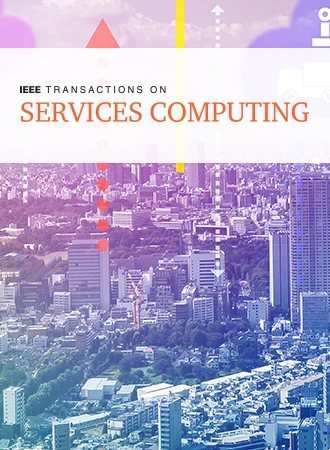A Hybrid Optimization Framework for Age of Information Minimization in UAV-Assisted MCS
IF 5.5
2区 计算机科学
Q1 COMPUTER SCIENCE, INFORMATION SYSTEMS
引用次数: 0
Abstract
UAVs-enabled Mobile Crowdsensing (UMCS) has gained considerable attention recently, but it is challenging to meet the data collection needs of the entire city using only the UAV with limited energy. Furthermore, how to effectively minimize Age-of-Information (AoI) and ensure data quality has not been well solved in previous studies. Therefore, this paper proposes a hybrid optimization framework for AoI minimization, which recruits massive distributed workers as the main force for data collection, while the UAV acts as a data collection collaborator and is more inclined to fly to the SNs that cannot establish connections with workers, To mitigate the potential security threats incurred by dishonest workers of the MCS system, we first provide a Greedy-based Multi-worker Task Assignment (GMTA) strategy, aiming to assign more urgent data collection tasks to reliable workers under workload constraints. Then, we propose a Deep-Reinforcement-Learning-based Global AoI Minimization (DRL-GAM) strategy for the UAV path planning to find a set of optimal actions to minimize the global AoI. Based on the real dataset, our simulation experiments show that compared with traditional strategies, our DRL-GAM strategy can reduce the global AoI by an average of 6.49%无人机辅助MCS信息最小化时代的混合优化框架
基于无人机的移动众测(UMCS)近年来备受关注,但仅使用有限能量的无人机来满足整个城市的数据收集需求是具有挑战性的。此外,如何有效地最小化信息年龄(Age-of-Information, AoI)并保证数据质量在以往的研究中也没有得到很好的解决。因此,本文提出了一种AoI最小化的混合优化框架,该框架招募大量分布式的工作人员作为数据收集的主要力量,而无人机作为数据收集的合作者,更倾向于飞往无法与工作人员建立联系的SNs。为了减轻MCS系统中不诚实工作人员带来的潜在安全威胁,我们首先提出了一种基于贪婪的多工作人员任务分配(GMTA)策略。在工作量限制下,将更紧急的数据收集任务分配给可靠的工作者。然后,我们提出了一种基于深度强化学习的全局AoI最小化(DRL-GAM)策略,用于无人机的路径规划,以寻找一组最优行动来最小化全局AoI。基于真实数据集,我们的仿真实验表明,与传统策略相比,我们的DRL-GAM策略在各种网络规模下,可以将全局AoI平均降低6.49%$\sim$68.21%,并且平均标准差仅为51.75%,比其他策略更稳定。
本文章由计算机程序翻译,如有差异,请以英文原文为准。
求助全文
约1分钟内获得全文
求助全文
来源期刊

IEEE Transactions on Services Computing
COMPUTER SCIENCE, INFORMATION SYSTEMS-COMPUTER SCIENCE, SOFTWARE ENGINEERING
CiteScore
11.50
自引率
6.20%
发文量
278
审稿时长
>12 weeks
期刊介绍:
IEEE Transactions on Services Computing encompasses the computing and software aspects of the science and technology of services innovation research and development. It places emphasis on algorithmic, mathematical, statistical, and computational methods central to services computing. Topics covered include Service Oriented Architecture, Web Services, Business Process Integration, Solution Performance Management, and Services Operations and Management. The transactions address mathematical foundations, security, privacy, agreement, contract, discovery, negotiation, collaboration, and quality of service for web services. It also covers areas like composite web service creation, business and scientific applications, standards, utility models, business process modeling, integration, collaboration, and more in the realm of Services Computing.
 求助内容:
求助内容: 应助结果提醒方式:
应助结果提醒方式:


